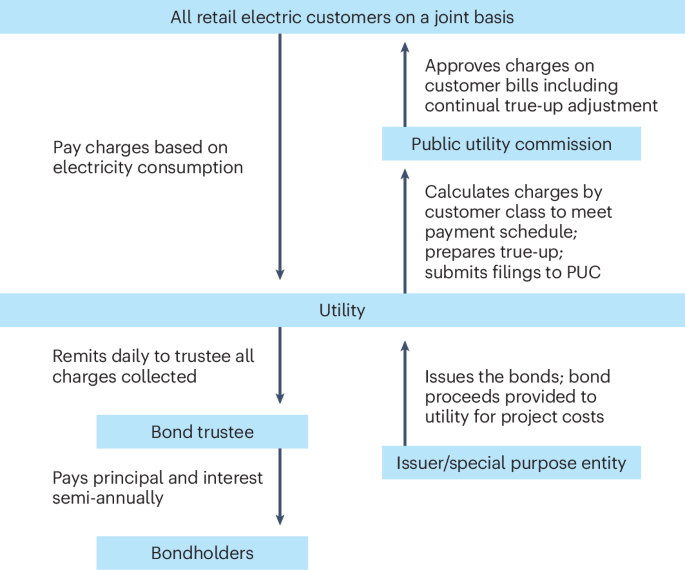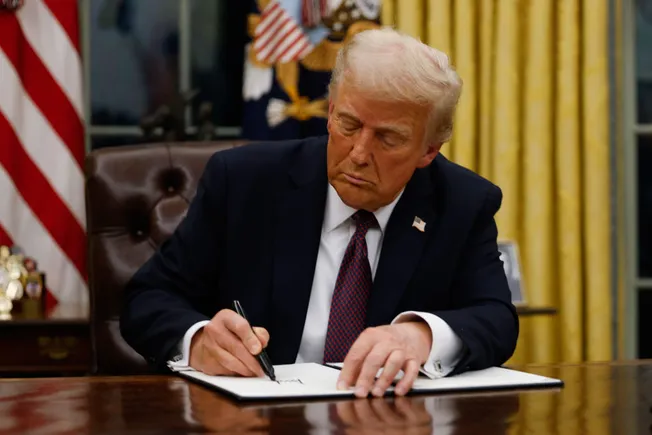Trump order threatens cancellation for over-budget, delayed Pentagon programs
The new Executive Order, signed by President Donald Trump today, gives the Pentagon 90 days to review all of its major defense acquisition programs and compose a list of poor-performing programs for potential termination.


US President Donald Trump speaks during a meeting in announcing the F-47 6th generation fighter jet in the Oval Office of the White House on Friday March 21, 2025.
(Demetrius Freeman/The Washington Post via Getty Images)
WASHINGTON — President Donald Trump has ordered the Pentagon to review all major weapons programs and consider cancelling any effort that is more than 15 percent over budget or behind schedule — or just those deemed unwanted by the Secretary of Defense — as part of a larger measure meant to make the weapons buying process faster and more efficient.
Today Trump signed off on a new executive order, titled “Modernizing Defense acquisitions and Spurring Innovation in the Defense Industrial Base,” which gives the Pentagon 90 days to review all of its major defense acquisition programs and compose a list of poor-performing programs for potential termination.
That directive could tee up a list of potential cancellations far beyond what the Defense Department typically considers, as it usually takes a so-called critical “Nunn-McCurdy breach” where costs have ballooned by at least 50 percent before the department weighs whether to stop a program.
“Any program more than 15 percent behind schedule based on the current Acquisition Program Baseline (APB), 15 percent over cost based on the current APB, unable to meet any key performance parameters, or unaligned with the Secretary of Defense’s mission priorities, will be considered for potential cancellation,” states the executive order. “The Secretary of Defense shall submit the potential cancellation list to the Director of the Office of Management and Budget (OMB) for future budget determinations.”
The Executive Order does not say by what metric a program may be deemed “unaligned with the Secretary of Defense’s mission priorities.”
The review, which will be signed off by Defense Secretary Pete Hegseth, will be performed by Deputy Defense Secretary Stephen Feinberg with coordination from the service secretaries and the Pentagon’s undersecretary of defense for acquisition and sustainment, the executive order states.
Although the executive order does not lay out which programs will be in the Trump administration’s crosshairs, a White House fact sheet accompanying the order calls out the new Air Force One jets, the Sentinel intercontinental ballistic missile system, and “nine Navy ship programs” as efforts that are either overbudget, behind schedule or both.
“As I work to again rebuild America’s military strength and deterrence that Joe Biden so foolishly squandered, we need to take a long, hard look at defense procurement and our defense industrial base, because it’s been withered down to nothing,” Trump said, according to a White House fact sheet. “Given all the money we spend on the Pentagon, it’s unacceptable that we would ever run out of ammunition or be unable to quickly produce the weapons needed.”
The order comes just a day after Trump suggested he was pushing for an annual Pentagon budget near an all-time-high $1 trillion.
Beyond the program reviews, the order instructs Hegseth to submit an acquisition reform plan within 60 days that will give preference to commercial technologies, reduce bureaucratic or redundant processes, and encourage innovation.
The plan should help expedite weapons acquisition and include “a general preference for Other Transactions Authority, application of Rapid Capabilities Office policies or any other authorities or pathways to promote streamlined acquisitions under the Adaptative Acquisition Framework,” the order states.
It should also include a review of acquisition workforce jobs — including program managers, contracting officers and financial managers — with the goal of “eliminat[ing] unnecessary tasks, reduc[ing] duplicative approvals, and centraliz[ing] decision-making.”
Cuts to the defense acquisition workforce could be on the table, as Hegseth is also tasked developing a separate “acquisition workforce reform” plan within 120 days that lays out the staffing levels needed to develop and buy the military’s weapons systems. That plan will also include new performance evaluation metrics, such as “the ability to demonstrate and apply a first consideration of commercial solutions, adaptive acquisition pathways through the Adaptive Acquisition Framework, and iterative requirements based on the perspective of the end user,” the order states.
Finally, the order also calls for the Pentagon to propose changes to existing acquisition regulations, including the elimination of overly burdensome rules, and directs a “comprehensive review” of the Joint Capabilities Integration and Development System within 180 days.

















































































































































































